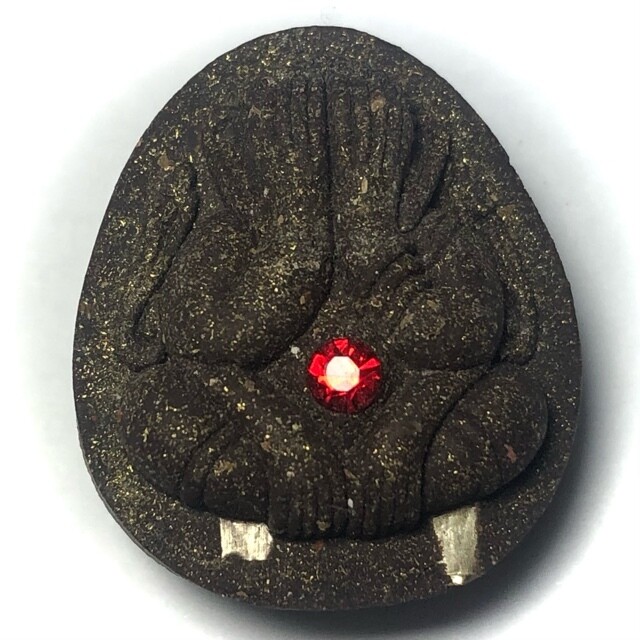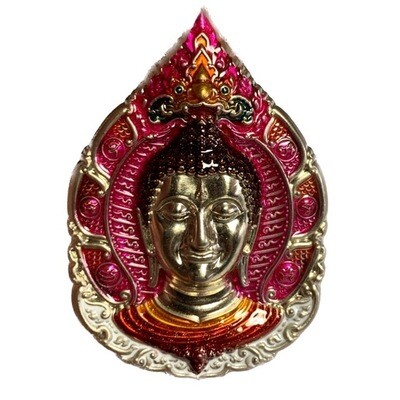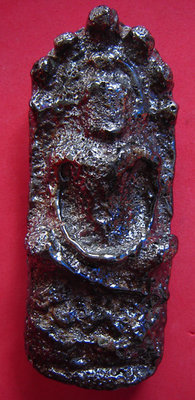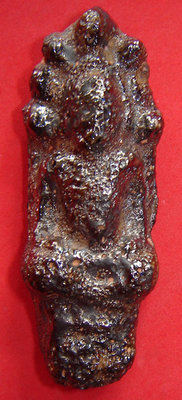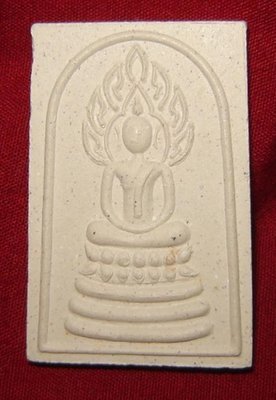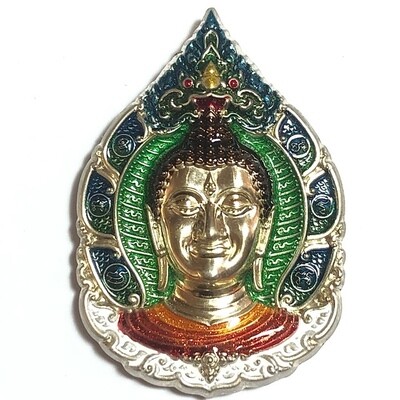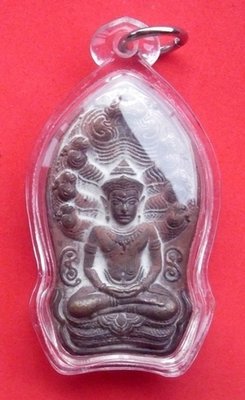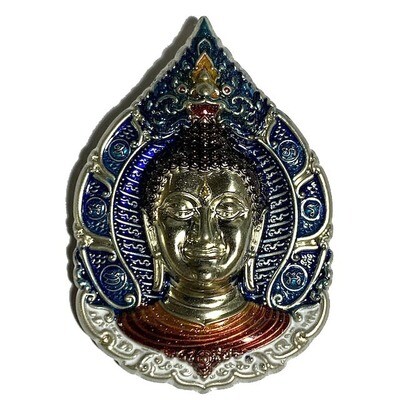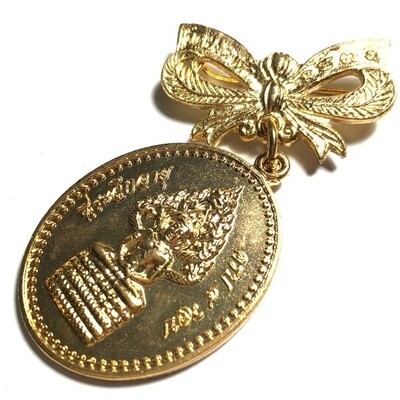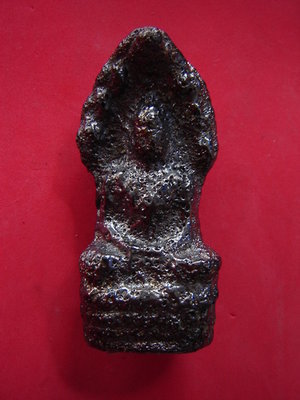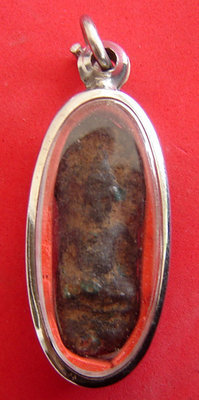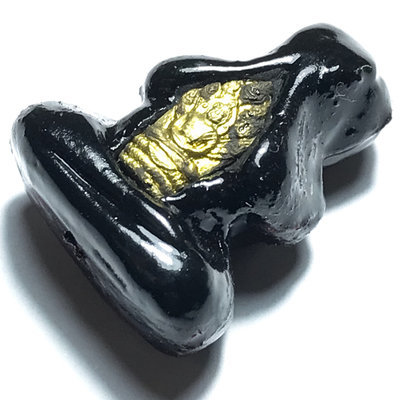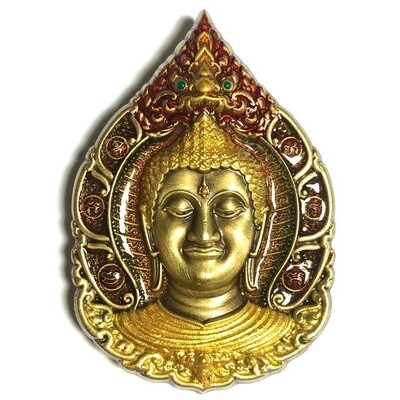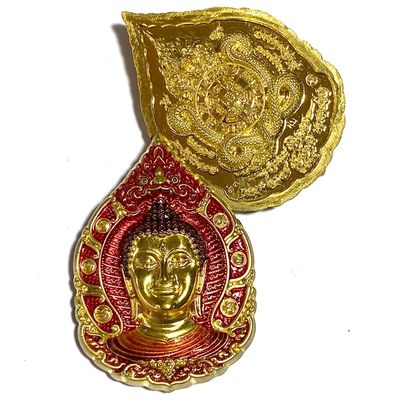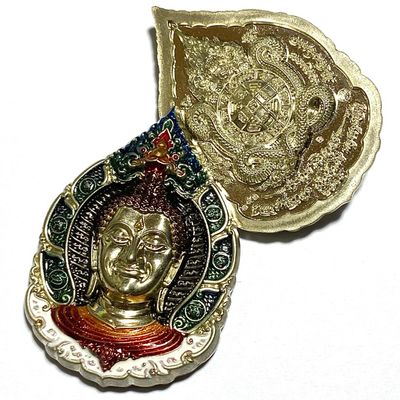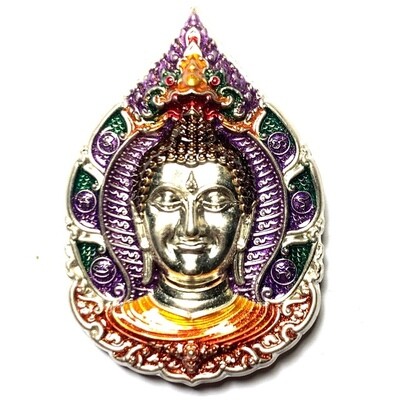

Thailand Amulets
Thai Buddhist and Magical amulets for Wealth, Health, Love and Happiness.
Vast Selection of Amulets
We have a vast selection of over 4000 different kinds of Sacred Amulets and Bucha Items, including Buddha Image, Loi Ongk statuettes, Buddhist Monk Coin Amulets, Takrut Charms, Nam Man Prai Oils, Mai Kroo Wands, Mitmor Ritual Knife, Lek Lai Kaya Siddhi Elemental Substance, Kumarn Tong, Gambling Amulets, Mae Nang Prai, Muan Sarn Sacred Powder Amulets, Palad Khik, Animist Charms, Necromantic Amulets, Buddhist, Animist, Brahman and Necromantic Amulets.
Pra Pidta Sao Ha Maha Sethee 2557 BE Nuea Bailan Gem Insert 2 Takrut Jivara Robe & Lek Nam Pi Bead Luang Por Mian Wat Ban Janiang
Limited Edition Rian Pra Pid Ta (Pid Tawarn four armed Buddha) Sao Ha Maha Sethee 2557 BE Sacred Powder Amulet, with Buddha closing his eyes and orifices with his hands, entering the meditative state of Nirodha (extinguishing exterior and interior sufferings). in Nuea Bailan Powders (burned parchment grimoire powders), mixed with Wan (Sacred Herb) and Gold Powder flakes, with 1 Ploi Sek Maha Pokasap Enchanted Gem insert in front face, 2 Brass Takrut Sethee spells in base, with a piece of Luang Por Mian's Jivara Monk's Robe attached, and Met Prakam Nuea Lek Nam Pi Lek Lai related substance Rosary bead, inserted into the Yant Duang Sacred Yantra spell on rear face, from Luang Por Mian, of Wat Ban Janiang Wonaram.
This amulet is highly recommended for those who have debts, or who seek to attract good business, as well as those who seek a more peaceful heart ,through the stilling of emotional disturbances, and those who meditate. The Pra Pid Ta amulet is known for a multitude of powers.
Pra Pid Ta amulets, as well as Pra Pid Ta in form of Pha Yant, and Bucha statues, have been produced as objects of reverence and protection since very ancient times in Thailand. The artisans of that time created various styles and interpretations using the various periodic influences of Buddhist art and sculpture available at the time.
Various Deity forms were used to make the Pid ta posture (‘Pid Ta’ means ‘covering the eyes’) – various Buddhas or Bodhisattvas or Deities are fashioned into the posture of Pra Pid Ta, or Pid Tawarn (meaning ‘closing the orifices). Pid Tawarn can close 7, or 9 orifices (seven being called ‘Pra Pid Sadtatawarn’ and nine being called ‘Pra Pid Navatawarn’).
Blessed on the 2557 BE 'Sao 5' (เสาร์๕), 'Fifth Lunar Saturday'. auspicious astrological occasion (Even in the west, The fifth lunar day is the day when we can clearly feel our inner limitations, predestination, our fade. The main symbol of the fifth lunar day stands for fighting for your opinion and principles, or protection unjustly convicted people and for unfolding your feelings.). The blessing of this edition was given 4 separate empowerment ceremonies, before the 5th and final blessing was performed on Saturday the 5th of April 2557 BE.
This final Blessing was performed on a 5th Lunar Saturday, for the Auspicious Empowerment of the amulets in Buddha Abhiseka Ceremony. The amulets were then released on the 19th April 2557 BE for distribution. Various amulets were released, ranging from coins, t sacred powder Pra Somdej and Pid Ta, Lockets, Pha Yant, and other Talismanic Charms.
The rear face of the amulet has a bead of Lek Nam Pi for Anti Black Magick and Wealth Attraction inserted into the Yant Duang on the rear face. The Yant Duang is a Karma Improving Yantra, for Auspicious Horoscope, Lifting Obstacles, Long Life and Prosperity. This edition included in its entirety; Pra Rian and Rian Kanajarn (Buddha Coins and Monk Coins), Bia Gae, Gamlai Bracelets, Mitmor, Takrut, Pra Pid Ta, Pra Somdej, Pra Kring, Lockets, Pra Sivali Loi Ongk Statuettes, Pra Khun Phaen Muan Sarn Sacred Powders Amulets, Roop Lor Luang Por Mian Loi Ongk Statuettes, Luang Por Mian Bucha Statues, Kumarn Tong, Nang Kwak, and Pra Nakprok Loi Ongk Statuettes. One can assume that Look Om Sacred Powder balls were also released, as they are usually always made with remaining Muan Sarn Powders left over from amulet pressings.
Luang Por Mian is a Master Gaeji Ajarn of the South Eastern Isan, with Powerful Mastery over the Khmer Sorcery Arts. Luang Por is especially renowned for his Wicha Kumarn Tong, which is becoming ever more Famous and spreading ever further afield. Luang Por Mian, abbot of Wat Janiang Wonaram, in Buriram, is a Khmer Gaeji Ajarn Master Monk of Kampuchean Lineage, and one of the few remaining living Masters who received Wicha from the Great Luang Phu Suang (Taewada Len Din), Legendary 500 year-Old Monk of Wat Ban Rarom in Sri Saket.

Luang Por Mian is one of the Great 20th Century Masters of the Southern Isan Province. Highly revered and regarded for his amulets and occult charms, he has received national news coverage at least three times for his powerful amulets, and his inheritance of the Wicha of Luang Phu Suang Taewada len Din. His Wicha is so highly regarded by other Sorcerors, that even the great Pra Ajarn Dtua of Wat Sap Lam Yai, direct apprentice to Luang Por Guay (Wat Kositaram) and Luang Phu Hmun (Wat Ban Jan), beseeched apprenticeship to Luang Por Mian.
Luang Por Mian was born in the year 2482 BE in Ban Bpaneum, in Tambon Beung Khanaa, in the Province of Bodhisattva, in Kampuchea. he ordained at the age of 10 years old as a Samanera Novice Monk, and remained ordained, reaching the age of 20, he then ordained again to the elevated status of a fully fledged Bhikkhu. He studied and practiced Wicha Akom (Khmer Buddha Magic and Sorcery) with 12 different Kampuchean Masters.
Among these masters, Luang Por Mian gives particular reference and respect for the powerful Wicha they bestowed upon him, were Pra Ajarn Lun, first and foremost, after which, for the Wicha Hun Payont, he gives respectful reference to his own Grandfather, who was a famous lay sorceror of the time, and passed this Wicha on to Luang Por Mian as a young boy.
During the time he was still practicing as a monk in Kampuchea, he traveled for many years on Tudong in the forests, from one place to another, until his sixth year of adult ordination (age 26). it was then that his country fell into civil war, and many atrocities were occurring, with even mass killings of young ordained Samanera Novice Monks occurring.
Luang Por Mian then disrobed and fled to the Dta Praya Municipal District in the year 2519 BE and stayed out of sight of the Khmer Rouge. He then later reordained into the Sangha again in Thailand and traveled around on Tudong solitary forest wandering through the provinces along the Thai-Khmer border. He arrived at Sri Saket, and decided to stay here to intensify his practice. He spent 5 years studying Wicha with the Great Luang Phu Suang, and also received additional training in Wicha Akom from Luang Phu Jiam Adtisayo.
Luang Por Mian was also a very close colleague and co-practitioner with Luang Phu Tammarangsri, another great Gaeji Ajarn of the time. After making many practicing under these masters for many years, Luang Por Mian received the request to become the abbot of Wat Ban Janiang, and administrate the temple, and care for its Devotees, in the year 2536 BE.
Since then, this great Khmer Master has remained at Wat Ban Janiang, and became the source of faith and spiritual comfort of the people of Sri Saket, His inheritance of the Lineage Wicha of the Great Luang Phu Suang has carried many Devotees of Luang Phu Suang to give allegiance and devotion to Luang Por Mian, as the continuance of the Wicha of the Great Miracle Monk of Sri Saket, Luang Phu Suang, Taewada len Din 500 Pi.
The amulets of Luang Por Mian are highly sought after and prized by both Devotees and Collectors alike, and have received much acclaim in the Wongarn Pra Niyom amulet appreciation clubs and societies, especially his Coin type amulets of the Maha Lap Maha Sethee edition, his Hanuman Maha Lap Bpraab Pairee, Pra Kring Boroma Kroo Ganlayano Medicine Buddha Statuette, and many many other amulets.
The Kata for Pra Pid Ta are varied, both short and long. One of the best known ones is the Kata Pra Jao Ha Praongk (five Dhyani Buddhas) as well as the fivefold encoding of Namoputtaya of Na Metta
“Na Metta Mo Karunaa Put Pranee Taa Yin Dee Ya En Doo – Krai hen hnaa Goo rak Goo khad Goo midai”
The above Kata is Maha Saneh Choke Laap – luck and fortune, and charming power.
Pra Pid Ta is also known as Pra Kawambadee
Kata Pra Kawambadee
(This kata is for increasing ones wealth and belongings and good fortune);
Namo Puttassa Kawambadtissa Namo Tammassa Kawambadtissa Namo Sangkassa Kawambadtissa Sukha Sukha Warang Na Mo Puttaaya Ma A U Tugkhang Anijjang Anatta Jewa
Longer Version
Tamma Jaggang Bpatang Sudt Dtawaa Puch Chidt Dtawaa Adt Dtang Bpatang Sandtigae Arahaa Laapo Logaanang Hidtagaranaa Pandtae Pawam Bpadtinaama Dtisulokae Subpaagadto Prahma Budt Dto Mahaa Thaero Araho Chaedtago Muni Bpidt Dti Thaero Samo Inta Kantappaa Asuraa Taewaa Saggo Prahmaa Pi Bpuchidto Na Mo Put Tas Sa Kawam Bpadtissa Na Mo Tammassa Kawam Bpadtissa Na Mo Sangkassa Kawam Bpadtissa Sukhaa Sukha Warang Tammang Tammajagga Bpawarang Warang
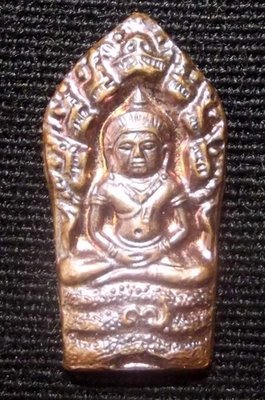
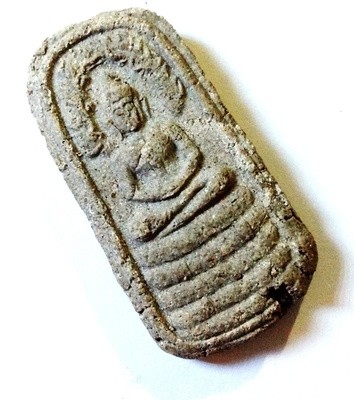
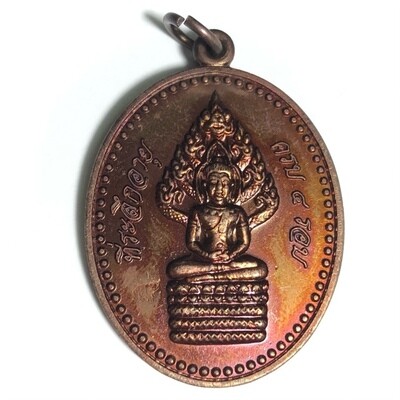
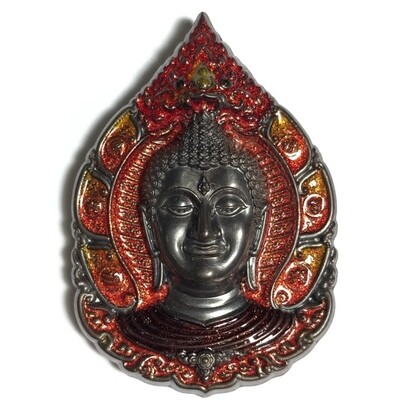


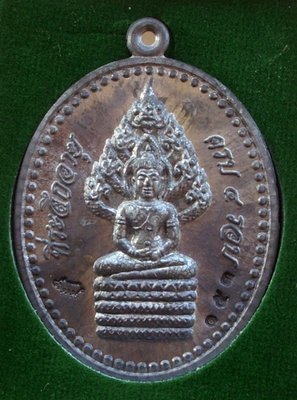

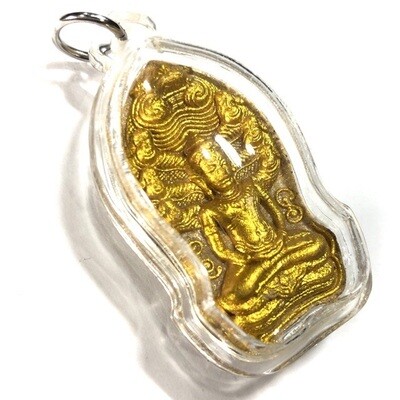

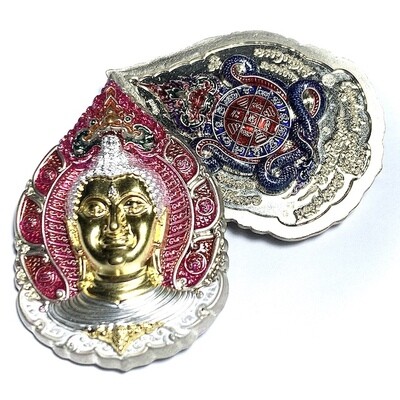
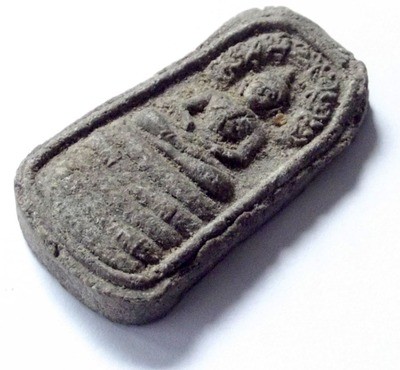
Contact Us
Follow Us on Youtube
About Us
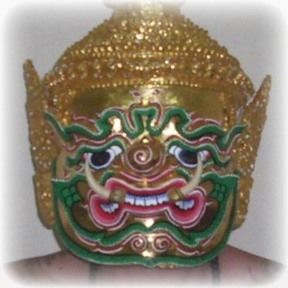
Ajarn Spencer
Proprietor
Thailand Amulets is owned and Administrated by Thai Occult and Amulet expert, Ajarn Spencer Littlewood who guarantees only authentic blessed amulets, and a free gift with every order, as well as his safe delivery or money back guarantee. https://facebook.com/ajarnspencer
